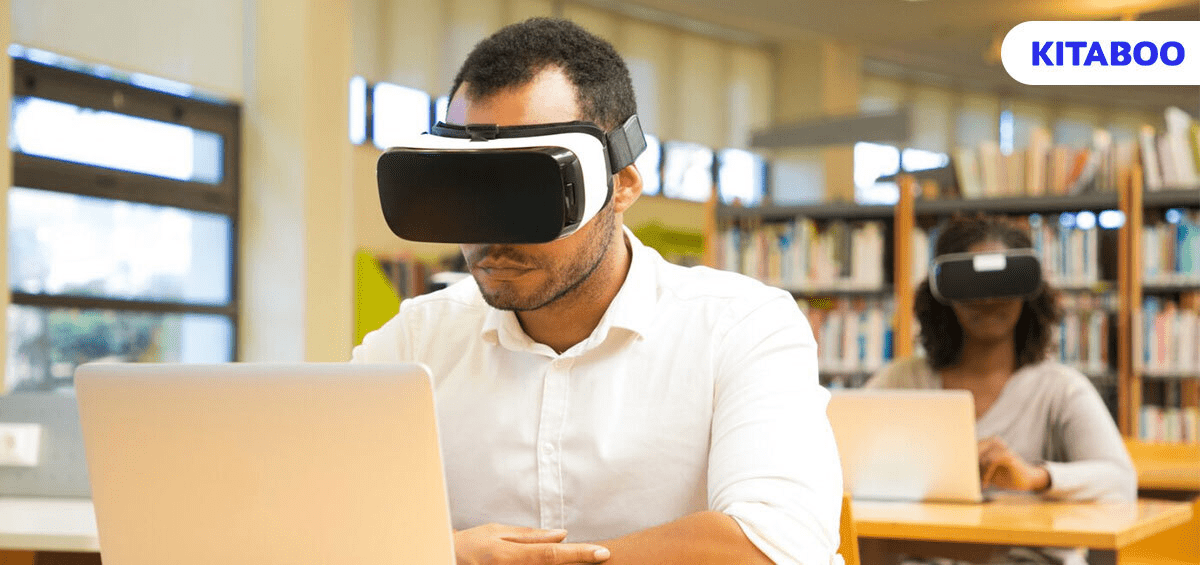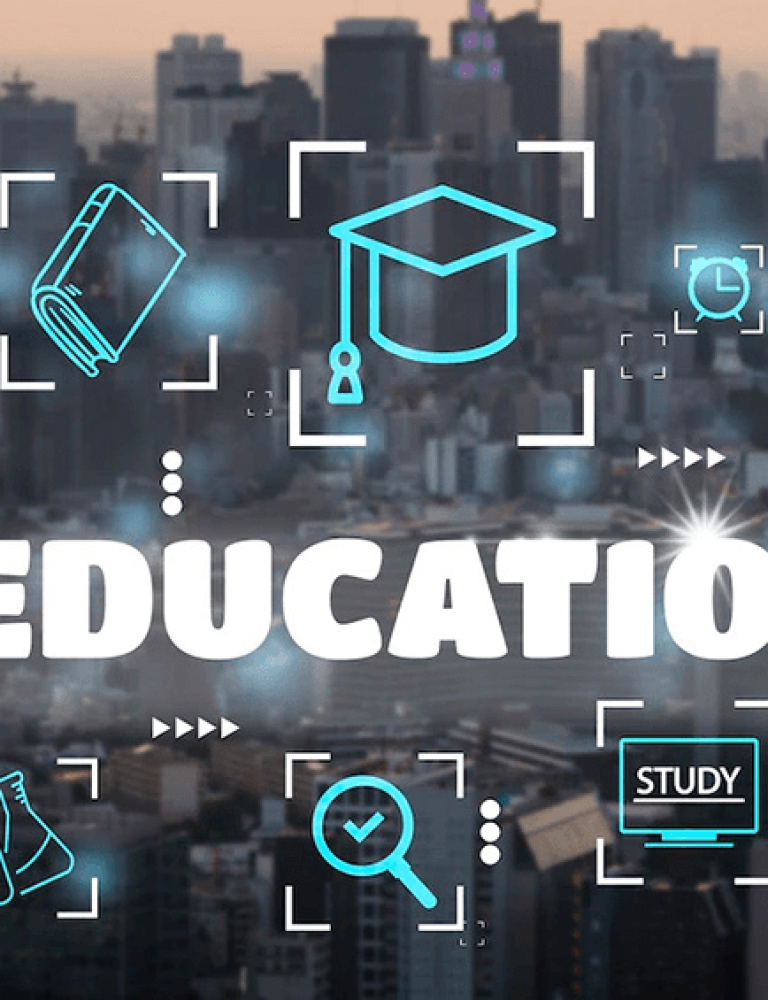Post-pandemic, the landscape of education has changed significantly. Digitalization has taken over, and as a result, so have digital learning platforms like KITABOO. To navigate this digital educational landscape successfully, employing learning technology is more important than ever.
Learning technology refers to the practice of using technological tools for the facilitation of education, learning, and assessment.
In this blog, we will delve into the importance of learning technology, exploring its benefits for students and teachers.
Table of Contents:
I. Importance of Learning Technology
- Access to Vast Learning Resources
- Makes Personalized Learning a Reality
- Enhances the Learning Experience
- Facilitates Bite-sized Learning
- Makes Learning More Immersive
- Makes Learning More Collaborative
- Facilitates Interactive Assessments
- Helps Track, Analyze, and Relay Performance
II. The End Note
Importance of Learning Technology
Learning technology holds great potential for revolutionizing education and changing the future of educational institutions for the better.
To better understand the importance of learning technology, let’s look at how it can benefit the people in educational institutions.
Access to Vast Learning Resources
Learning technology makes it possible for students and teachers to access an extensive array of learning resources. Through the use of digital learning platforms such as KITABOO, teachers can provide students with access to a digital library of learning materials.
Furthermore, teachers have the ability to incorporate hyperlinks into eBooks, aiding in the development of a more comprehensive understanding of concepts.
Technological tools enable students to effortlessly access a diverse range of learning materials in the form of eBooks, both online and offline, providing them with the convenience of learning at their fingertips.
Makes Personalized Learning a Reality
Students have different learning needs and styles. While some students prefer auditory learning, other students may prefer kinesthetic or visual learning.
Learning technology makes it possible to accommodate these diverse learning styles. With digital learning platforms like KITABOO, teachers can provide students with videos, audio, interactive eBooks, and other forms of content. Students can study at a convenient pace with the help of a preferred mode of content.
Thus, learning technology makes learning a more comfortable and personalized experience, fostering better comprehension of course concepts among students.
Enhances the Learning Experience
Learning technology introduces interesting features in education, such as multimedia and gamification. Using digital learning platforms like KITABOO, teachers can incorporate multimedia components like images, animations, videos, and other visually stimulating graphics to create an engaging learning environment.
Furthermore, teachers can integrate gamification elements such as points, badges, and leaderboard scores to infuse excitement and enjoyment into the learning process.
Research has shown that the inclusion of gamification elements can stimulate students’ interest in learning, promote active participation, and ultimately enhance their academic performance.
Facilitates Bite-sized Learning
The attention span of today’s tech-savvy generation has significantly decreased, making it essential for teachers to develop bite-sized learning modules. With the assistance of digital learning platforms such as KITABOO, teachers can produce and distribute concise, easily digestible lesson modules across a variety of subjects.
Bite-sized learning aids students in understanding fundamental concepts and retaining information for longer periods of time, thereby enhancing the quality of learning and education.
Makes Learning More Immersive
The use of technologies such as AR and VR in learning enhances the immersive nature of the learning experience.
AR and VR technologies allow students to understand complex concepts and see the real-life applications of what they are learning. For example, VR and AR headsets enable students to witness the inner workings of blood vessels and the intricate structures of the brain.
They also enable students to go on virtual field trips to museums and historical sites, creating a realistic and captivating learning environment.
Makes Learning More Collaborative
Learning technology facilitates a more collaborative learning environment for students through online discussions and group projects.
With the help of AI, teachers can generate engaging discussion topics and group activities based on learning materials. Additionally, using digital learning platforms like KITABOO, teachers can create team projects, assign students to different teams, and monitor their progress.
In addition to teachers, students can use apps such as KITABOO Reader to take notes and highlight important content for discussions in their textbooks. They can then share their knowledge and interact with each other.
This collaborative approach helps students improve their interpersonal skills, which will only benefit them academically and professionally in the future.
Facilitates Interactive Assessments
Learning technology has revolutionized assessment conduction in education. By introducing a wide array of interactive assessments, learning technology has done away with the tedious pen-and-paper assessments.
With the help of digital learning platforms like KITABOO, teachers can create interactive quizzes, polls, multiple choice questions, true or false exercises, and a variety of other assessments.
Interactive assessments help teachers gauge students’ academic knowledge and degree of comprehension. These assessments also enable teachers to gain insights into students’ critical thinking, problem-solving, and decision-making capabilities.
This knowledge further enables teachers to adjust their teaching strategies in accordance with students’ learning needs.
Helps Track, Analyze, and Relay Performance
Tracking, analyzing, and relaying performance data is crucial to improving students’ learning outcomes. Learning analytics platforms like KITABOO allow teachers to regularly assess students’ academic progress and present the data in clear visual formats such as graphs and charts.
Moreover, platforms like KITABOO offer predictive analysis to anticipate students’ future performance and empower teachers to generate analytical reports.
Analytical reports help teachers identify areas of strength and weakness, students’ engagement levels, and key performance indicators related to achievement and behavior. These reports also enable teachers to provide actionable feedback to students, guiding them to improve their academic performance, behavior, and achievements.
The End Note
In today’s digital world, learning technology plays a crucial role in education. It has the potential to enhance the quality of learning by making it more personalized, compact, engaging, and immersive. It can also facilitate the creation of interactive assessments and the analysis of academic performance.
With the education technology market expected to exceed $348.41 billion by 2030, the importance and influence of learning technology are only going to increase. Therefore, it is imperative for educational institutions to embrace learning technology in order to provide high-quality education in the future.
For a seamless adoption of learning technology, educational institutions can consider reaching out to KITABOO, a leading digital textbook platform. KITABOO enables academic institutions to harness technology to create and distribute custom, interactive educational content securely to students.
To know more about learning technological solutions, write to us at KITABOO@hurix.com.
Discover How An Ebook Conversion, Publishing & Distribution Platform Can Help You
Kitaboo is a cloud-based content platform to create-publish & securely distribute interactive mobile-ready ebooks.
You May Also Like








